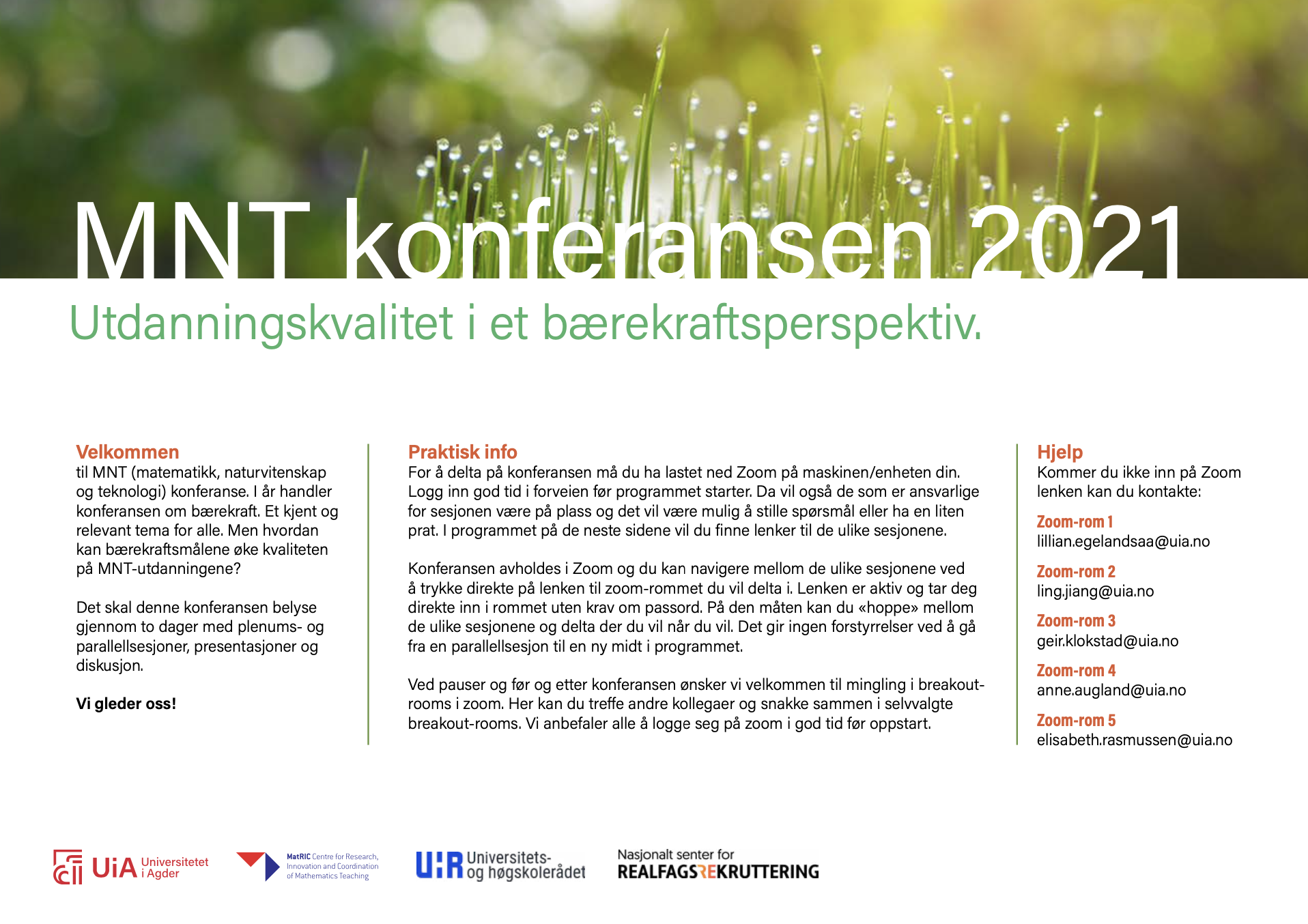Tverrfaglig, prosjektbasert innføring i statistikk på universitetsnivå
DOI:
https://doi.org/10.5324/njsteme.v5i1.3947Sammendrag
Forståelse for statistikk og kvantitativ forskningsmetode er en av bærebjelkene i kunnskapservervelse og -kommunikasjon innen naturvitenskapene. Anvendelse av statistikk er i sin natur tverrfaglig, og forutsetter samarbeid på tvers av domener. For å kunne frembringe ny kunnskap, er det nødvendig å kombinere domenekunnskap fra andre fagfelt med gode analysemetoder og forståelse for resultatene av disse. For å gjøre studentene i stand til å løse komplekse, reelle utfordringer etter endt studium, må vi jobbe med komplekse problemstillinger også under utdannelsen. Et pilotprosjekt med prosjektbasert undervisning ble introdusert i innføringskurset i statistikk på NMBU høstsemesteret 2018. Læring skulle tilegnes gjennom større prosjekter, med data fra andre fag og fagfelt. De fleste som går innføringskurset i statistikk på NMBU skal ikke bli statistikere, og arbeidsmetoden i et slikt prosjektbasert kurs reflekterer mer realiteten når de senere skal bruke statistikk som domeneeksperter. Våre erfaringer og observasjoner tyder på at å gå fra et tradisjonelt introduksjonskurs i statistikk til et prosjektbasert kurs, kan øke motivasjonen til studenter som ikke selv motiveres av teoretiske fagfelt som statistikk.
Downloads
Nedlastinger
Publisert
Utgave
Seksjon
Lisens
Opphavsrett 2021 Hilde Vinje, K.F. Frøslie

Dette verket er lisensiert under en Creative Commons Attribution 4.0 International Lisens.
The Nordic Journal of STEM Education licenses all content of the journal under a Creative Commons Attribution (CC-BY) licence. This means, among other things, that anyone is free to copy and distribute the content, as long as they give proper credit to the author(s) and the journal. For further information, see Creative Commons website for human readable or lawyer readable versions.
Authors who publish with this journal agree to the following terms:
1. Authors retain copyright and grant the journal right of first publication with the work simultaneously licensed under a Creative Commons Attribution License that allows others to share the work with an acknowledgement of the work's authorship and initial publication in this journal.
2. Authors are able to enter into separate, additional contractual arrangements for the non-exclusive distribution of the journal's published version of the work (e.g., post it to an institutional repository or publish it in a book), with an acknowledgement of its initial publication in this journal.
3. Authors are permitted and encouraged to post their work online (e.g., in institutional repositories or on their website) prior to and during the submission process, as it can lead to productive exchanges, as well as earlier and greater citation of published work (See The Effect of Open Access

